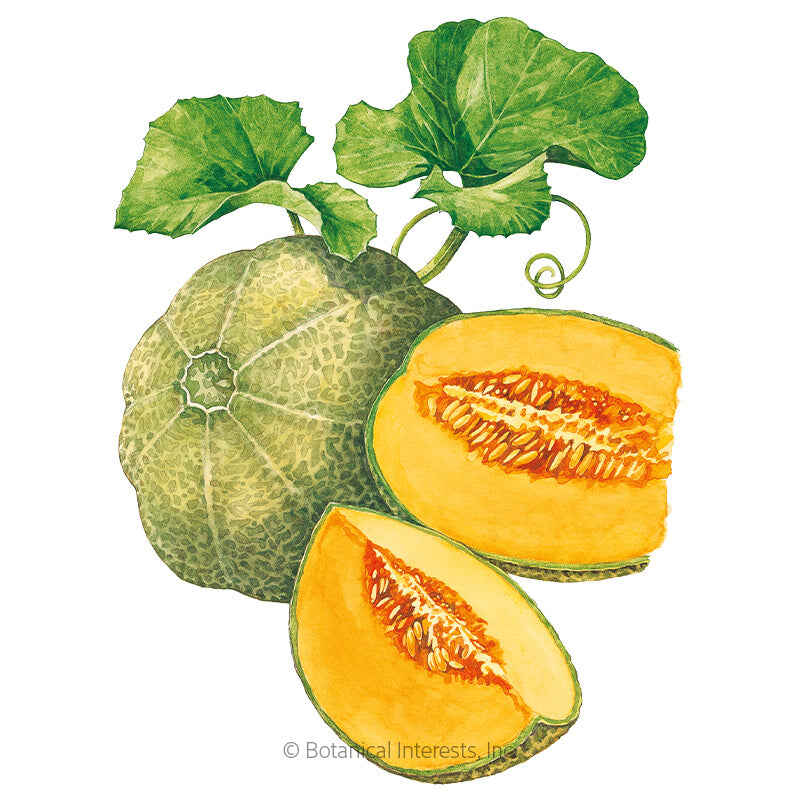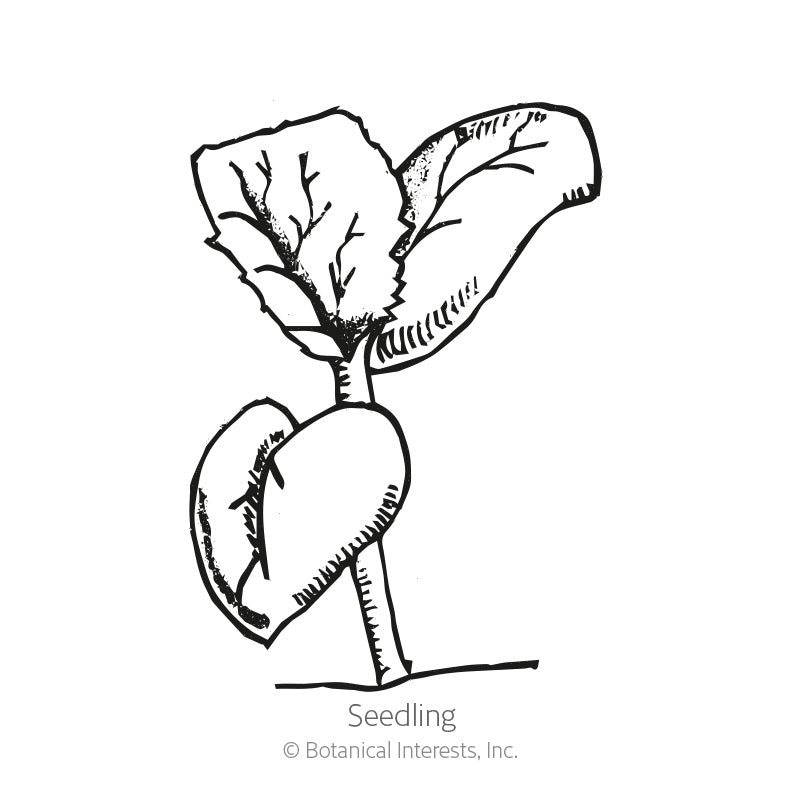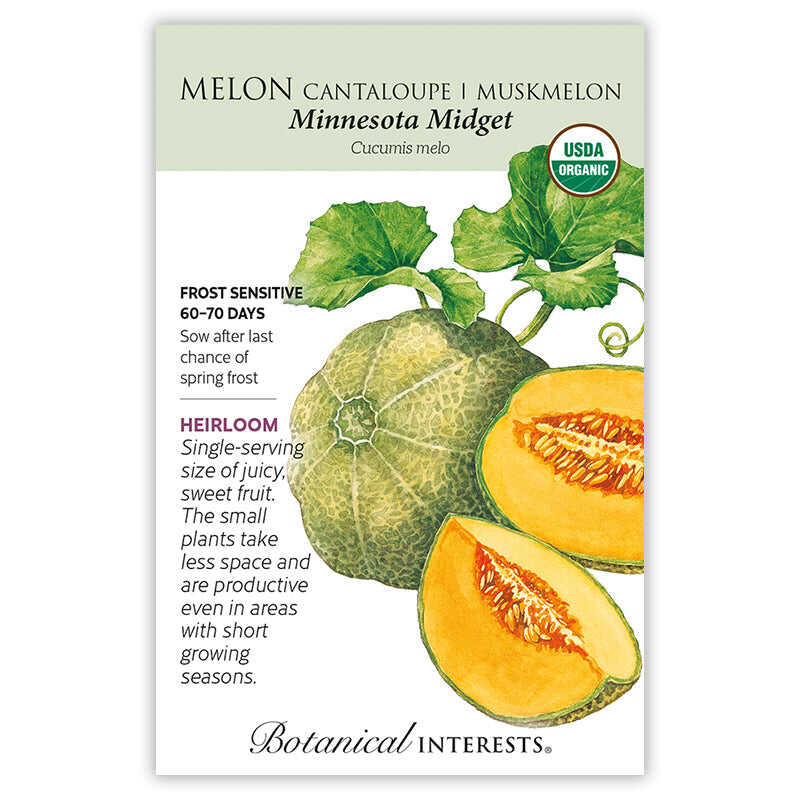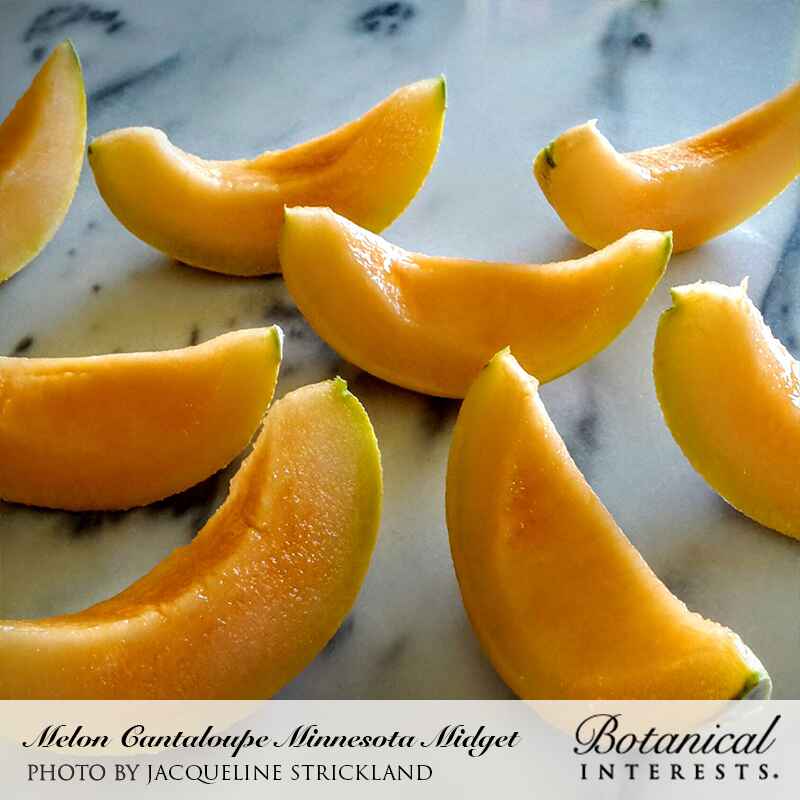



- Variety Info
- Sowing Info
- Growing Info
- Learn More
Variety Info
Days to Maturity: 60–70 days
Family: Cucurbitaceae
Type: Cantaloupe (Learn more)
Native: Africa, Asia, Australia, West Pacific Islands
Hardiness: Frost-sensitive annual
Exposure: Full sun
Plant Dimensions: Compact vines up to 36" long
Variety Info: 4" round fruits with fine, dense netting and golden-yellow flesh, high sugar content, edible to the rind. 'Minnesota Midget' was developed in 1948 by the University of Minnesota at St. Paul.
Attributes: Fusarium Wilt Resistant, Frost Sensitive, Good for Containers

Sowing Info
When to Sow Outside: RECOMMENDED. 1 to 2 weeks after your average last frost date, and when soil temperature is 70°–90°F.
When to Start Inside: Recommended for short-season areas. 2 to 4 weeks before transplanting within 2 weeks after your average last frost date. Sow into biodegradable pots that can be directly planted in the ground; roots are sensitive to disturbance.
Days to Emerge: 5–10 days
Seed Depth: ¼"
Seed Spacing: 2–3 seeds per mound
Row Spacing: 24"–36" apart
Thinning: Thin to 1 plant per mound
Your hardiness zone is
Growing Info
Harvesting: Harvesting at the right time is very important with melons. Commercial growers harvest before melons are ripe, forcing them to ripen off the vine, but, the last few days of ripening on the vine put a lot of sugars into the melon. Bottom line is that melons taste significantly better when vine ripened. How do you know when melons are ripe? These indicators: 1) The color between the surface netting is brown, not green. 2) A ripe melon will have a pleasant, fruity aroma at the blossom end. 3) A crack will form on the stem right near the point of attachment. This is called the "slip stage". Harvest when the stem end turns yellow and vines easily "slip" away when the fruit is gently twisted. If it is somewhat difficult to detach the fruit from the vine, the melon is not ready yet. Do not allow to over-ripen.





